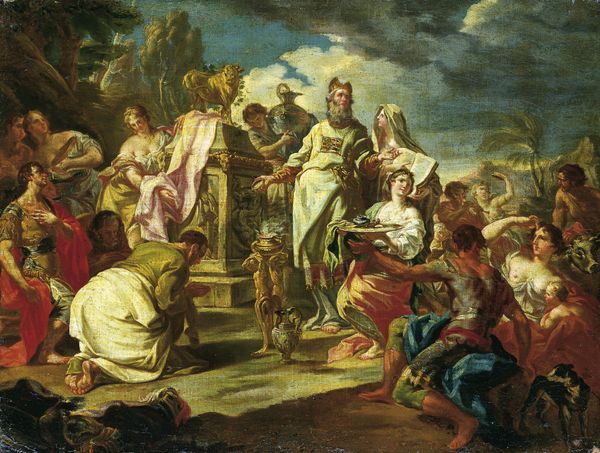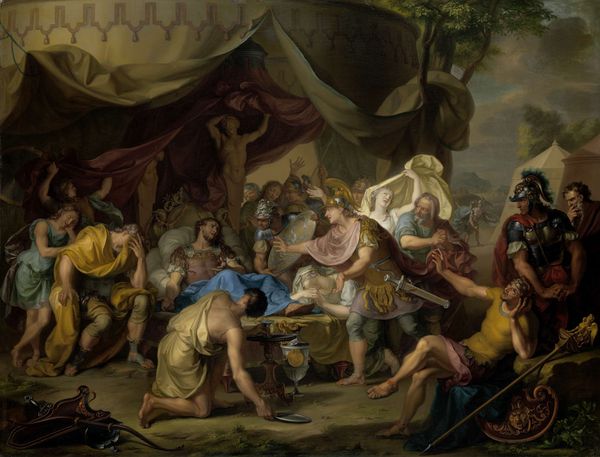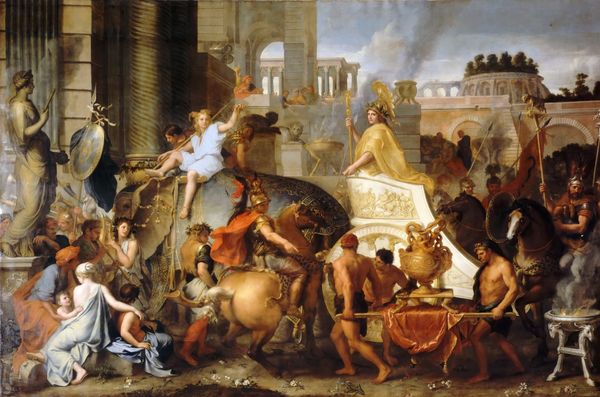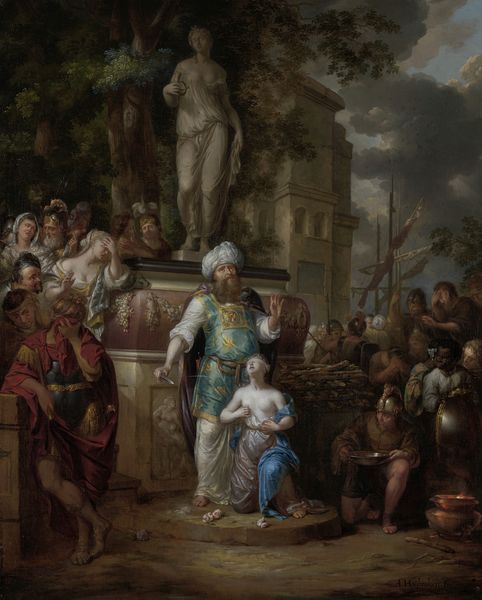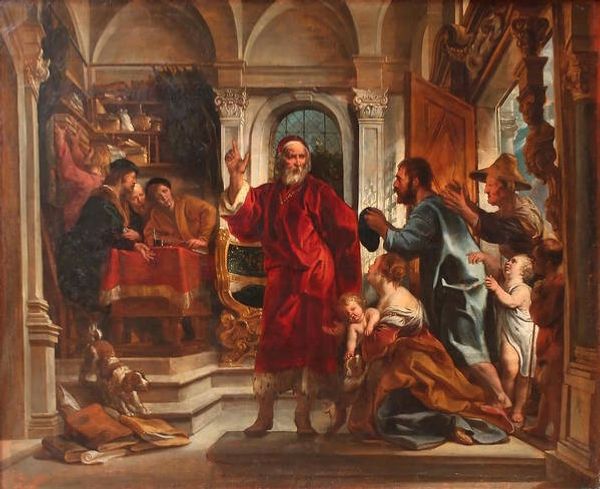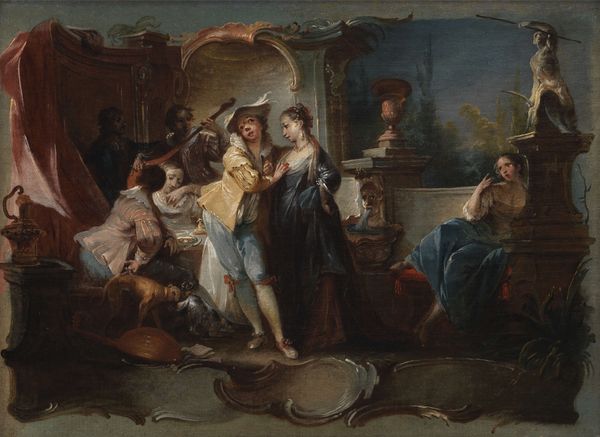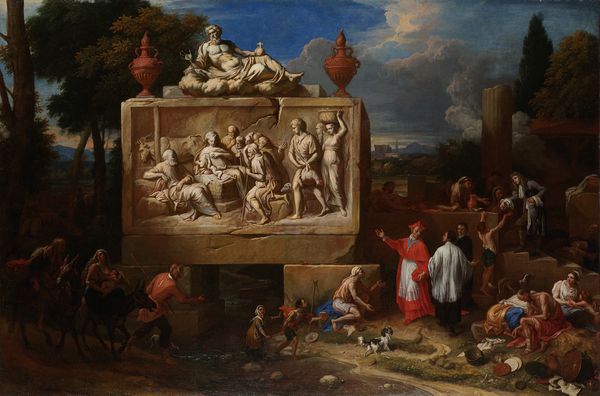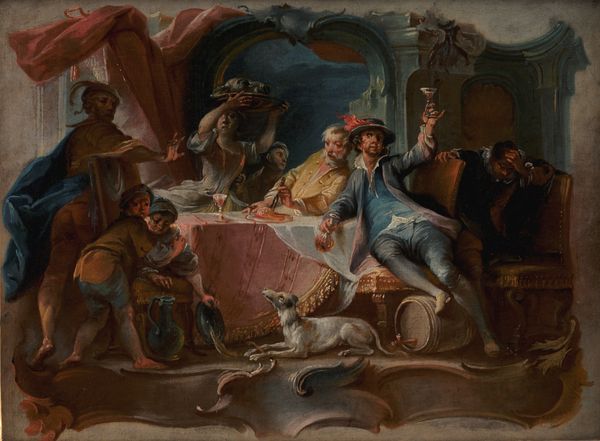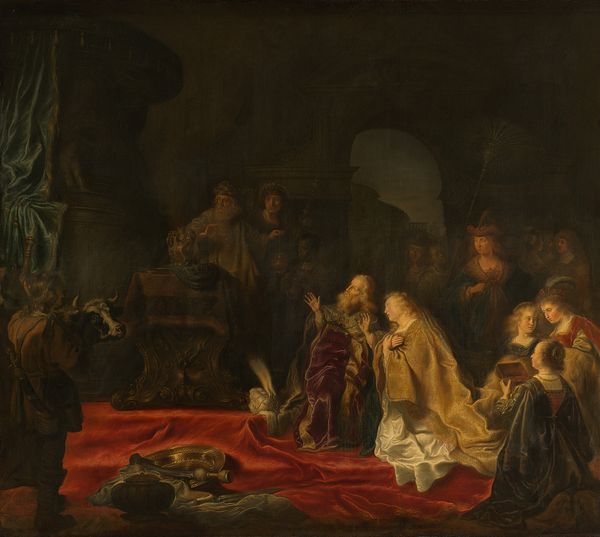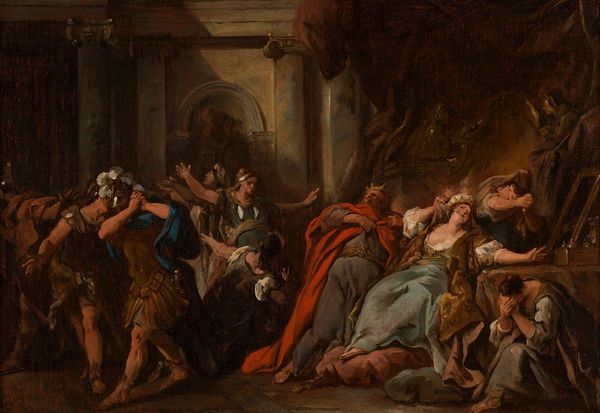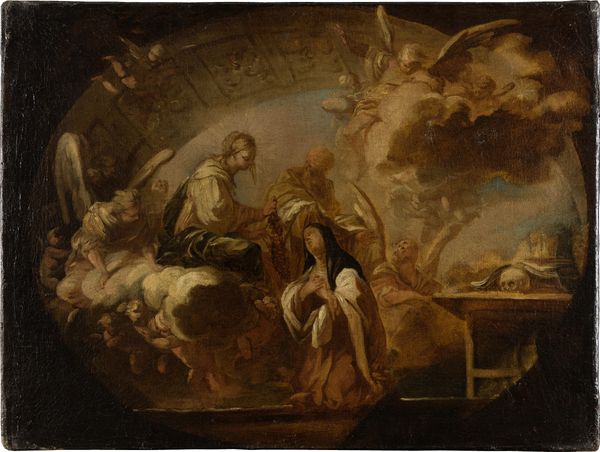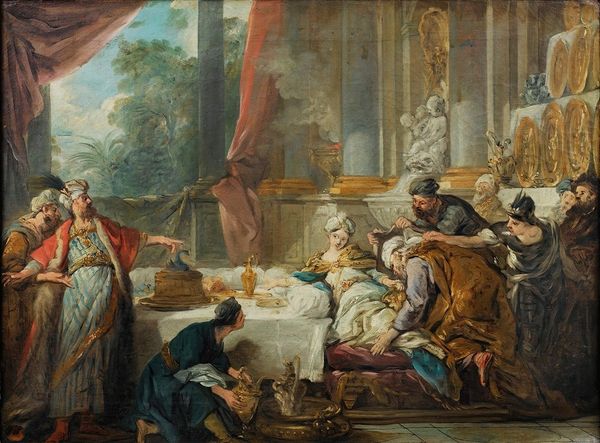
painting, oil-paint
#
narrative-art
#
baroque
#
painting
#
oil-paint
#
figuration
#
oil painting
#
men
#
painting painterly
#
history-painting
Dimensions: 19 x 28 7/8 in. (48.3 x 73.3 cm)
Copyright: Public Domain
Jacob Pynas painted Paul and Barnabas at Lystra some time in the early to mid-seventeenth century. It shows a scene from the book of Acts, when the Apostle Paul and Barnabas were mistaken for the Greek gods Zeus and Hermes in what is now Turkey. The painting creates meaning through the visual codes of its time. Pynas, active in Amsterdam, would likely have been aware of debates between the Protestant church and its adversaries. In particular, the painting seems to critique the spectacle and ritual of the Catholic Church by representing classical pagan practices. Note also the classical temple setting and the ancient statue. These features would have been included because of the association between antiquity and the Catholic church, further implying that both are idolatrous. Art history is concerned with how we can interpret historical events through close examination of the cultural and institutional context. Contemporary pamphlets and religious writing might give us an even clearer idea of the purpose of the painting.
Comments
No comments
Be the first to comment and join the conversation on the ultimate creative platform.
